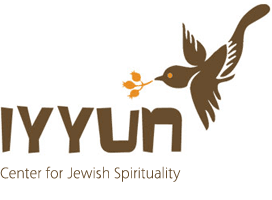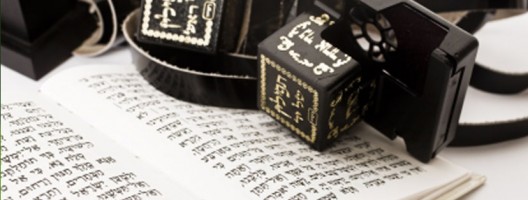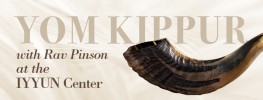A Basic Understanding
“You shall love Hashem, your G-d, with all your heart, with all your soul, and with all your might. And these words which I command you today shall be upon your heart. You shall teach them thoroughly to your children, and you shall speak of them when you sit in your house and when you walk on the road, when you lie down and when you rise. You shall bind them as an os – a sign – upon your hand, and they shall be for totefos – a reminder – between your eyes.†(Deuteronomy 6:8)
Although there are many dimensions to the words of the Torah, they are meant to be taken literally as well; thus – just as it commands – we take inscriptions of chapters of Torah and then place them, one on the head as a reminder between the eyes, and the other as a sign on the arm situated against the heart.
These are the powerful spiritual tools we call “Tefillinâ€.
Tefillin consist of two cube-shaped leather boxes with straps hanging down, which attach the boxes – one, Tefillin shel rosh (Tefillin of the head), snugly to the head and the other, Tefillin shel yad (Tefillin of the hand) wrapped around the arm. Each of these boxes contains the four paragraphs of the Torah that mention the idea of wraping the Tefillin: Deuteronomy 6: 49, and 11:13-21, Exodus 13:1-10 and 13:11-16. These are carefully hand-written on small parchments by a professional sofer (scribe) and inserted in the boxes.
Here, however, there is a basic difference between the two boxes: When the Torah describes the hand Tefillin, it uses a singular term, os; but for the head Tefillin, it uses a plural, totefos. Thus, each of the four Torah paragraphs in the head Tefilin is written on its own scroll and inserted in one of four small compartments. These four compartments are carefully pressed together to maintain the cube-like shape of the Tefillin. By contrast, in the hand Tefillin all four chapters are inscribed on a single scroll and placed in one compartment.
We place the hand Tefilin upon the left arm so that it rests near the heart, and the head Tefillin is placed above the forehead, between the eyes so it rests against the skull – near the brain. Thus mind, heart, and actions are all aligned – and unifed toward Heaven.
Two Levels of Makif:
Each of the Tefillin is comprised of a bayis (pl. batim) a box; within the box is the parchment, and upon the parchment are inscribed four chapters from the Torah. The head Tefillin are comprised of four separate compartments containing four separate scrolls, each with one chapter; whereas the hand Tefillin is a single compartment with all four chapters on one scroll. From the boxes hang straps, which encircle the head and tie on the arm.
The physical Tefillin describe a deeper spiritual reality. The box encircles the parchment, surrounding it; the parchment, in turn, surrounds the black ink of the holy letters. Thus there are three levels: two makifim, surrounding forces – the bayis (literally, house) is a makif ha’rachok – a distant surrounding, as a home surrounds the person dwelling within; the parchment encompassing the letters, is also a makif, albeit a makif ha’karov – intimate sourundings in close proximity to the letters, as “clothes†that garb the wearer. The actual writing is Torah: divine intellect, it is an internal truth, a penimi – an inward reality.
The Ten Sefiros:
The ten sefiros, the emanations through which divine energy flows into world, emerge in order: the three levels of intellect, and the seven emotional attributes. Chochmah – wisdom or intuition, binah –understanding, or cognition, and da’as –knowledge, or awareness, are collectively called mochin – mind, or seichel – intellect. These generate the seven emotions: chesed – kindness, gevurah – restraint, tiferes – harmony, netzach – ambition, hod – devotion, yesod – connection and malchus –receptiveness.
Beyond the intellect is kesser – the “crown†– deep desire. The order of the ten sefiros is replicated through the chain of creation: Malchus of a higher reality becomes the kesser-crown of the lower one. Kesser links above with below; so too, within kesser itself is a level which is drawn downward, called “arich anpin†– the “long face†– and a higher part of kesser connected upward, the final level of the higher world; this is called “atikâ€, indicating something that is detached or removed.
Head Tefillin:
The bayis of the head Tefillin is the most distant makif – the highest, deepest desire: It a crown above, and surrounding, the head. In cosmic terms, it represents the desire and purpose of creation, and from it a flow comes downward into the parchment; and then into the written word, the divine intelligence of Torah.
The head bayis contains chapters of Torah which represent intellect – chochmah, binah and da’as – teaching, instructing and guiding us how to live our personal lives and pursue our collective purpose.
On each side of the head Tefillin is the letter shin, one with three strands and one with four strands. The shin also alludes to the idea of seichel – intelligence, with the three strands representing chochmah, binah and da’as: First, a thought comes to mind, chochmah; then with the faculty of binah we comprehend and decipher the thought; and then we use our da’as to take the understanding we now have and implement it. Da’as affords us the ability to distinguish and make choices; it ensures that what we understand intellectually does not remain in the mind alone, but effects our emotions and informs our behavior. And since choices emerge in da’as, da’as itself can be subdivided into a right-side quality, chesed, and a left column, gevurah. Thus the three levels within mochin are actually four levels, and so we have the second four-pronged form of the shin, and the four divisions within the bayis.
In cosmic terms, kesser is the ultimate desire and purpose, and mochin brings the purpose to be lived out in real time; yet it is through the lower seven emotional sefiros that creation actually occurs. Indeed, the seven-day cycle of creation that the Torah describes directly reflects the seven sefiros, with each day of the weekly cycle representing another sefirah.
And so it is in our own lives. Our reality is primarily “emotionally†based, and the way most people live life is reactive, reflecting their emotional responses. It is often rare to find clarity of thought, expansive thinking and openness of mind. In Kabbalistic terms, this is because kesser – resolute purpose – and the mature deliberation of mochin are “above†the world; thus our purpose – and the means to attain it – does not seem so apparent, and need to be “revealed†to us.
Thus as we reach the age of thirteen, when our minds have developed sufficiently, we put on Tefillin with the intention to draw down our purpose and the revelation of the mochin into our reality, through our emotions until the truth of this higher revealed reality infuses our way of being and acting.
From the bayis – and the Torah contained within – flow the straps, first surrounding our heads, then tied in a knot the shape of a dalet – for the word da’as, and from the reality of da’as (albeit sometimes only in a state of poverty, dalus in Hebrew) flow the two straps: one to the right and one to the left, representing the general flow of the emotional attributes of chesed (kindness) to the right side, and gevurah (restraint) on the left; thus the right strap hangs lower then the left, for we wish to draw down more chesed then gevurah. In truth, chesed and gevurah emanate from the same “spaceâ€, the transcendental knot interweaving both these elements – rooted in the deepest place of kesser, the “blackâ€, the level beyond comprehension which is called the space for “the light of darkness.†Nevertheless, we seek to draw chesed – kindness – into dominant revelation.
In da’as is the key to our emotions, so that they open and flow in the general direction of either right or left, giving or restraining, openness or confinement. The straps represent a flow “downwardâ€, and though their “source†(made of leather) is the same as the parchment, the makif beyond letters and comprehension – they must be colored with the “darkness†of black dye, reflecting a descent below. They represent the highest level of kesser (the “blackâ€) projected into the lowest and densest of vessels.
Hand Tefillin:
But before we can draw down this new, deeper level of kesser-mochin we must make sure that our own vessels are fully equipped to absorb the new flow. For if we draw down mochin and the vessels are unfitting, we will cause a shattering of the vessels. And so, before we put on the Head Tefillin, we don the Hand Tefillin.
Whereas the bayis of the Head Tefillin is kesser, the bayis of the Hand Tefillin represents malchus. The “receiver†of the other nine sefiros, malchus contains them all; thus all levels – placed in separate compartments in the Head Tefillin – are written out in one scroll and included within one container. From malchus, we wrap the strap around our hands seven times (reflecting the seven emotional sefiros) literally tying, linking, and fastening our emotions and our hands in complete dedication, ready to receive the deeper levels of mochin.
Certainly there is mochin as well at the level of the hand, the physical world; however, it is the mochin connected with our emotional state – our emotional intelligence, as it were.
For every reality contains the entire partzuf – the complete internal structure of the ten sefiros, including mochin (intellect), middos (emotions) and actions. And so, in the Hand Tefillin we indicate the entire partzuf: First we place the bayis, then wrap on the upper arm twice, coresponding to the three levels of intellect, then we wrap the seven times which are allianged with the seven emotions, concluding with warping the straps around the palm of our hand reflecting the world of action.
Once this is in order, having bound our reality as is, in total dedication, we can put on the Tefillin of the head and draw down a much deeper, more profound measure of mochin – a mochin from a world of perfect oneness and unity, ensuring a perfect alignment between our deepest levels of soul, mind, emotions and actions.
The above is taken from a booklet by Rav DovBer Pinson on the Mitzvah of Tefillin published by the Shluchim Office. All rights reserved.







